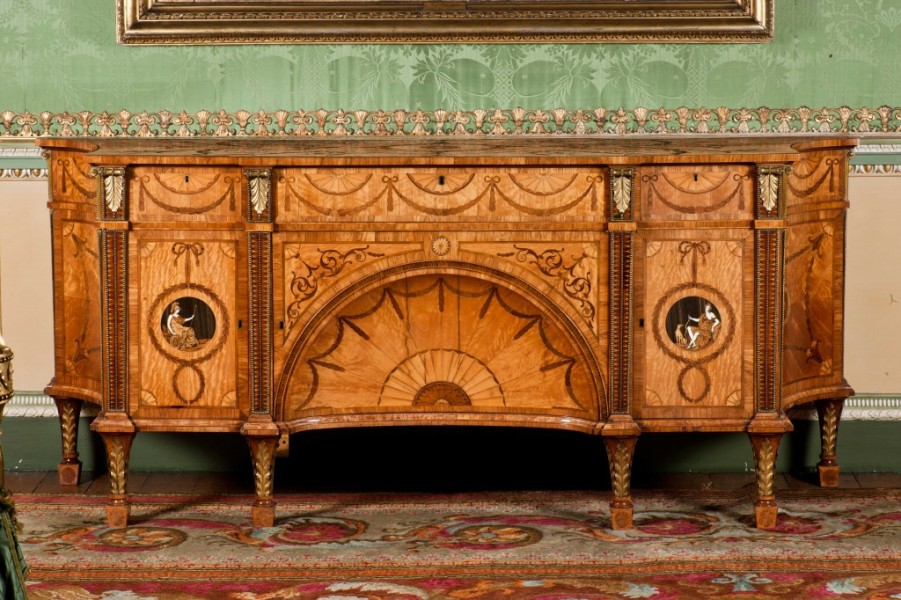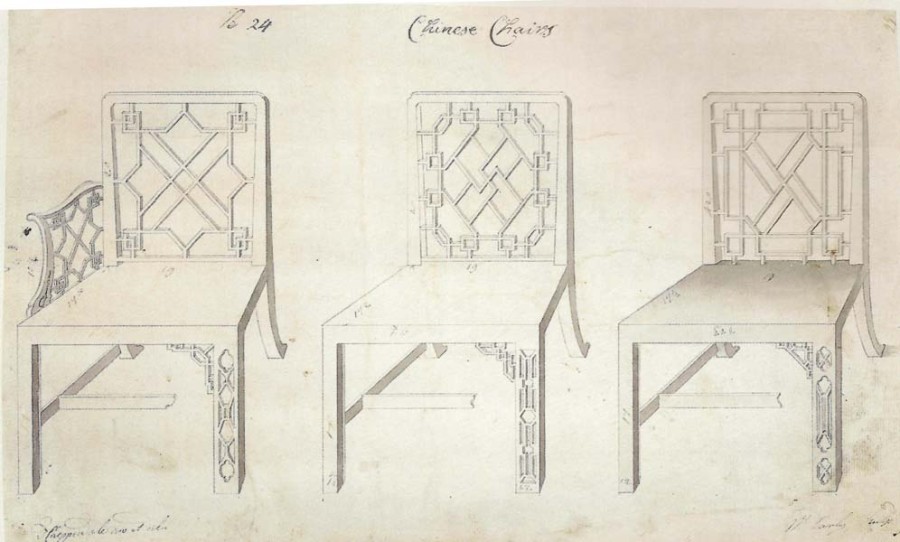Thomas Chippendale (1718-1778) is the most famous name in British furniture-making in the 18th century. Born in Yorkshire, Chippendale established his workshop in St Martin’s Lane, London in the 1750s, and in 1754 published the first edition of The Gentleman and Cabinet Maker’s Director, the first work of its kind solely devoted to the furniture and furnishing of the 18th century British interior. Chippendale’s patrons included aristocracy, gentry and public figures such as the actor David Garrick, and the furniture he supplied ranks among the finest ever made in Britain.
Drawing for Three Chinese Chairs, 1753.
The Chippendale Society
Chippendale worked initially in the popular Rococo style of the mid-18th century, designing and making furniture in a range of media, from carved mahogany to gilded wood, japanned Chinoiserie and fine upholstery.
From the 1760s onwards, Chippendale turned to the new neo-classical taste promoted by architects such as James Stuart, William Chambers and Robert Adam. Using fashionable and exotic materials such as satinwood, rosewood, purple-heart, ebony and ivory, Chippendale developed a unique and distinctive interpretation of the British neo-classical style.

The Diana and Minerva Commode, Harewood House, 1773.
Reproduced by kind permission of the trustees of the 7th Earl of Harewood's Will Trust and the Trustees of the Harewood House Trust
Many of Chippendale’s pieces remain in the houses for which they were commissioned and have been cherished by generations of owners and visitors alike.
Chippendale’s eldest son, also called Thomas Chippendale (1749-1822) joined his father’s firm and, after his father’s death, developed his designs to keep pace with changing fashion. Among his patrons was Sir Richard Colt Hoare whose house and park at Stourhead, Wiltshire, is one of the greatest artistic achievements of the Georgian age.

